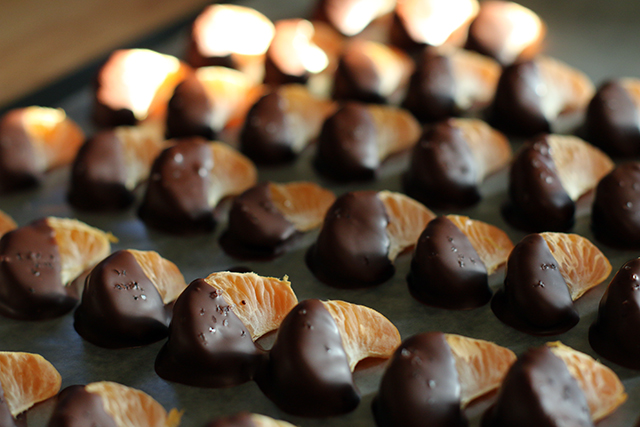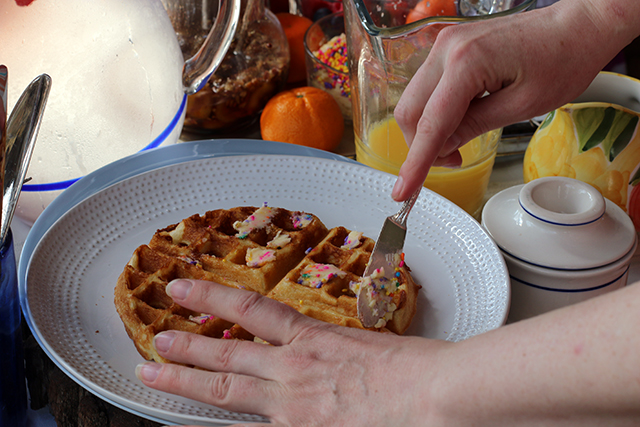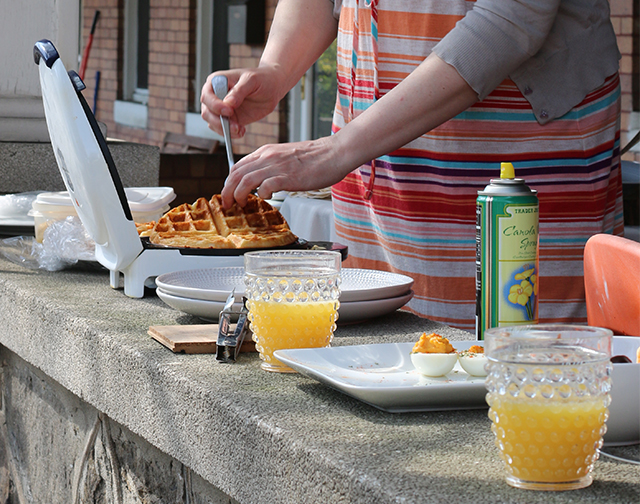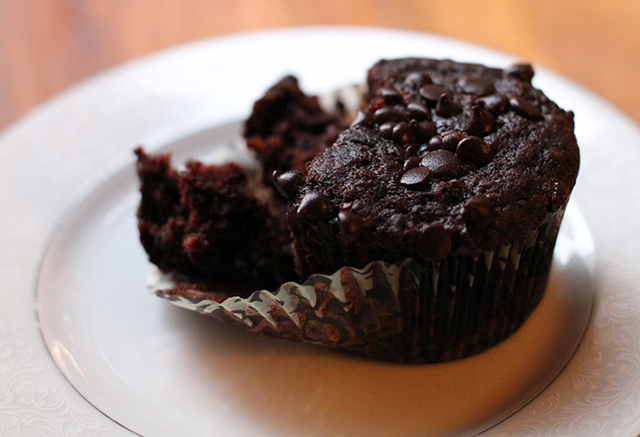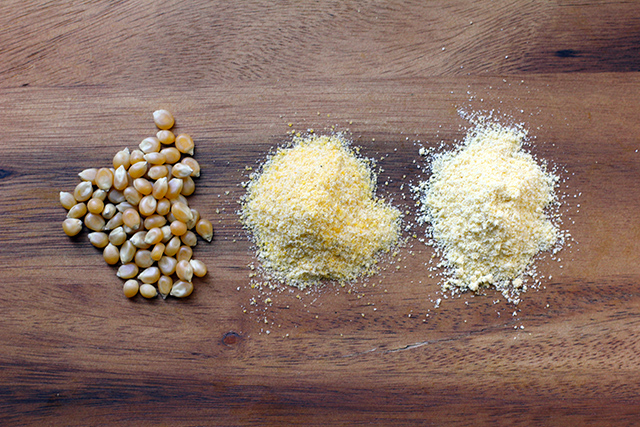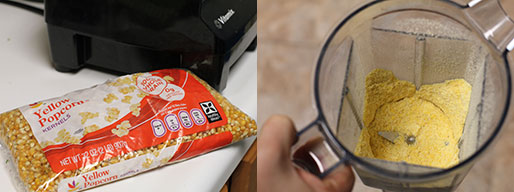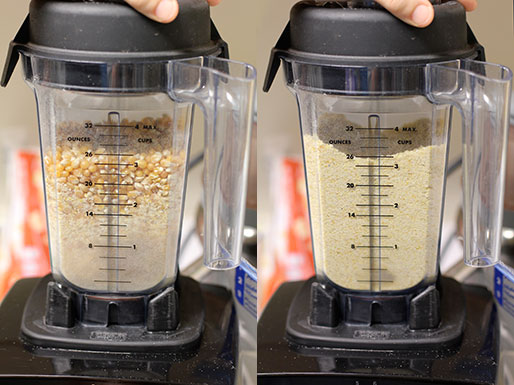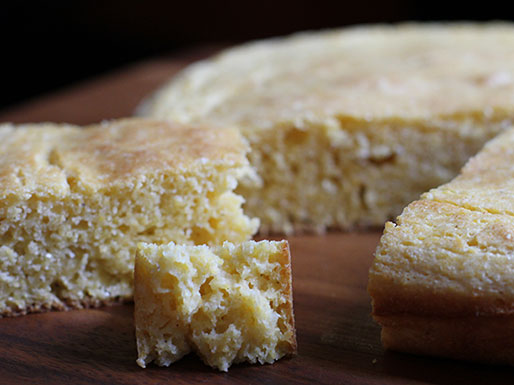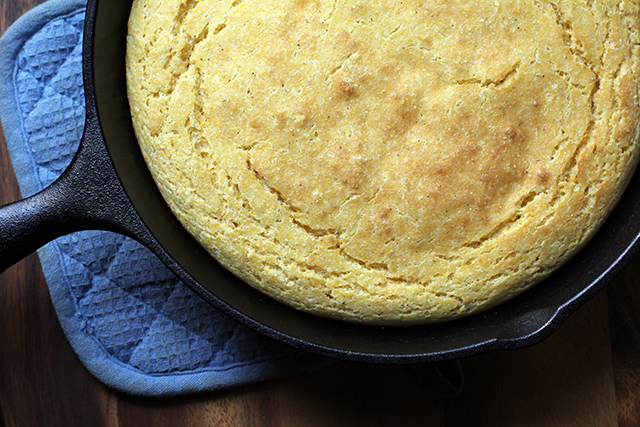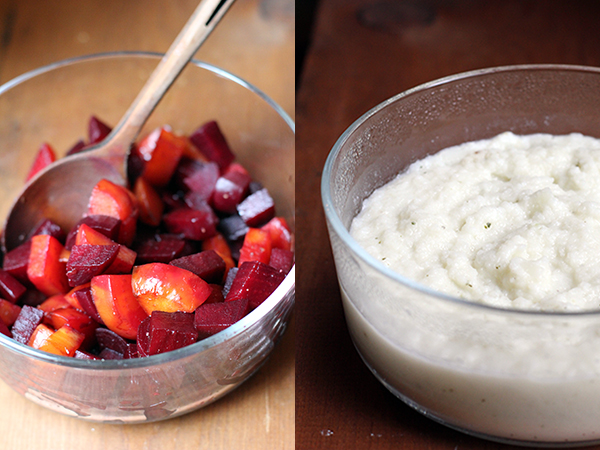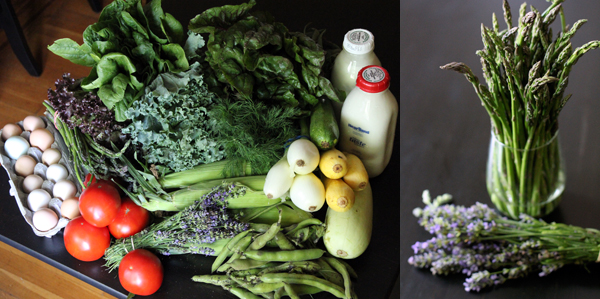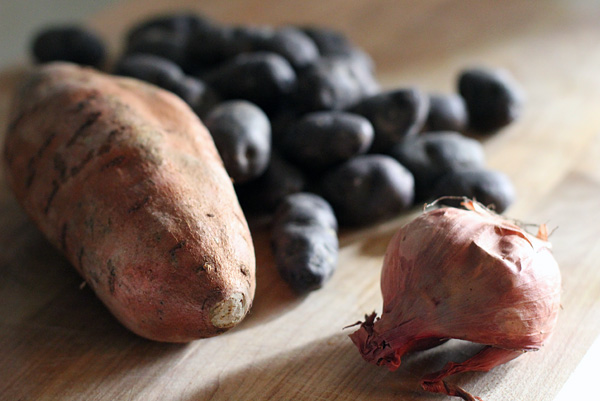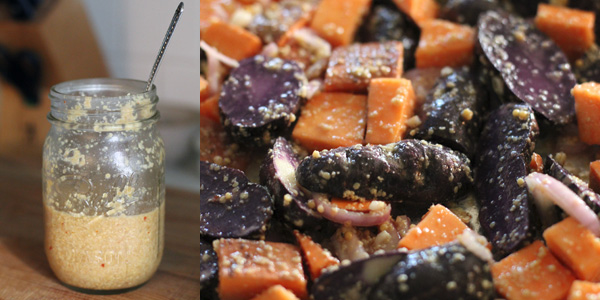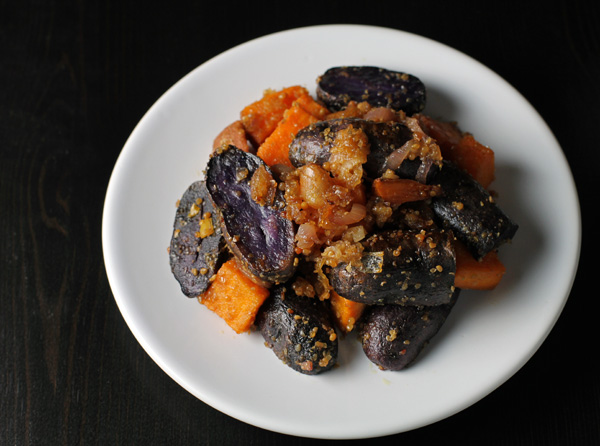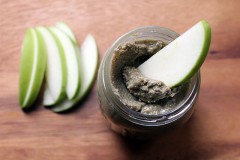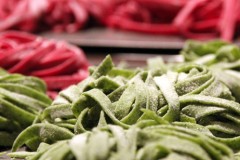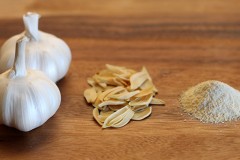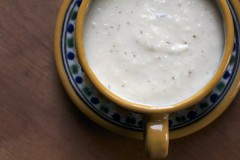Here in Wonderland Kitchen, some weekends are all about the big projects–sourdough bread baking or cheese making or pickled vegetable canning. Other weekends consist of 105-degree-shellacked days in which the majority of the “cooking” is devoted to sitting in the direct blast of the window air conditioner and contemplating the meal plan that requires the least amount of time out of its cool company. As you have probably already guessed, today I’m going to tell you about the latter.
I wasn’t going to post about any of these “recipes.” In fact, I was thinking of taking a couple weeks off–a little summer vacation–during which I would consider what this blog might best become as it cruises into its one-year anniversary. But then I started reading. The publication of The Locavore’s Dilemma seems to have sparked an entire series of forehead-slapping columns mirroring the same basic argument: namely, that people like me–a woman who finds a weekly trip to the farmers market both gratifying and the best way to feed myself and my family–well, we’re all just deluded, bougie romantics.
seems to have sparked an entire series of forehead-slapping columns mirroring the same basic argument: namely, that people like me–a woman who finds a weekly trip to the farmers market both gratifying and the best way to feed myself and my family–well, we’re all just deluded, bougie romantics.
Now, that may be so, but it might also be that my compatriots are reading labels and health reports and making some decisions about what goes in their mouth. I’m not sure what big box grocery store the authors of The Locavore’s Dilemma shop at, but it must not be the ones I have access to in which the “real food” section is but a small slice of the proceedings and much of what’s on view is so waxed it’s sticky or so wilted that it’s yellow before I even get it home. I’ll take some grit and bugs and seasonal selection over all that, thanks. I don’t deny that I buy citrus year round, and I don’t feel the need to hide my avocados under my toilet paper, either, but I do directly trace the high percentage of plant consumption in my diet to the fresh and varied and delicious produce provided by the local farmers who sell to me here in Maryland.
The even stranger criticism I’ve read in these anti-CSA articles this week (I have not read the book itself) is that the system is “wasteful” because homemakers can’t manage the volume of food received, either when they travel and need less, or when they have guests and need more. This leads me to believe that the authors neither cook efficiently nor share with their friends and neighbors.
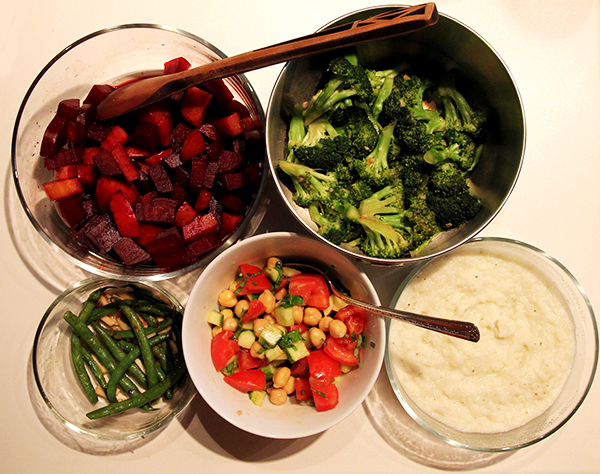
Still, I’ll admit that I was feeling kind of down about the whole thing when I read this inspiring article about cooking to eat rather than following a recipe in order to cook. It both encouraged me (this is how I’m trying to teach myself to work more creatively off-script in the kitchen, even without any formal training) and reminded me why the CSA system works for me. It challenges me to use what I have while allowing me to keep it simple, because fresh quality produce usually doesn’t need much help.
Anyway, at the end of last season, I ran my own numbers and found that the CSA and farmers market supply chain worked for my health (mental and physical), my social life, and my pocket book, so we’re still committed. The measures of good economics and fair trade may vary, I suppose. Yesterday, I pulled our “harvest” out onto the counter and came up with a Saturday night feast that proceeded from planned to plated in well under an hour. I don’t claim any of these are actual recipes as much as they represent one set of solution-instructions to the problem that was dinner. How are you solving these equations lately?

Cold Tomato and Cucumber Salad
1 small tomato, cored, seeded, and diced
1 small cucumber, from a friend’s garden, must be eaten already
1/2 cup leftover chick peas
4 basil leaves from the garden, shredded
Several generous drizzles of that fancy herbed olive oil we got for Christmas last year
salt to taste
Place all in a bowl, toss.
Creamed Kohlrabi
1 large bulb kohlrabi, peeled and cubed
1 large garlic clove
2 T buttermilk
1 tsp pesto from our friends a few blocks over
salt
Boil kohlrabi until fork tender. Drain and place vegetable and garlic in the bowl of a food processor and process until broken down. Add remaining ingredients and pulse a few more times to combine. Taste and add salt as needed. Serve hot.

Beets in a Sweet Thyme Balsamic Glaze
5 small beets, various colors, boiled, peeled, and cubed
4 T balsamic vinegar
4 thyme springs from the garden
1 tsp. honey
Place vinegar, thyme, and honey in a small sauce pan. Simmer until honey is dissolved, thyme is fragrant, and vinegar is somewhat reduced. Remove thyme sprigs and drizzle sauce over beets. Sprinkle dish with salt and pepper and toss to coat.
Five-Minute Broccoli
1 bunch broccoli, rinsed and cut into florets
1 T olive oil
2 cloves garlic, minced
3 T vegetable broth
Drizzle of tamari
Heat olive oil in a skillet and saute garlic and broccoli just until vegetable is bright green. Add broth and cover pan, steaming until vegetable reaches desired level of crispness. Drizzle with tamari to finish.

Backyard Garden String Beans + Party
12 green beans that are worth cooking because you grew them yourself, cleaned
sprinkle of lime juice from that lime you zested yesterday
Last of the sliced almonds still hanging out in the pantry
In the pan you just cooked the broccoli in, still coated with broth and oil and garlic bits, saute the beans. Wash remaining dishes and wipe counter off while they cook. When ready, sprinkle beans with almonds and lime juice.
Open some wine. Invite the neighbors over. Enjoy your feast.

